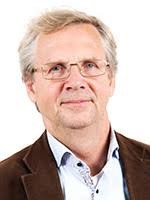Reaching further for cleaner water and rural development

Staffan Lund,
Agr., Waterdrive Coordinator,
Swedish University of Agricultural Sciences, SLU,
Sweden
Below I will share some pathways coming out of the work done by the partners in the WATERDRIVE project funded by the EU Baltic Sea Region Program. I will discuss two pathways to reach further and achieve better results in terms of water management and rural development.
Rural areas and agriculture are significant sources of eutrophication of Baltic waters. Progress is happening for example with legislation for better manure management and the introduction of agri-environmental programs for farmers investing in agri-environment measures like protective zones etc. Those are all good things with impact on the field scale. However, the up-take of such measures among farmers in high-risk intensive agricultural areas are still low. Moreover, despite the very good things done it is hard to see the positive trends in water quality measurements on the landscape- and or drainage basin level. The two pathways discussed below aims at strengthening voluntary actions on top of the existing regulation. The aim is to un-lock unused potential and reach further. One of the cornerstones is to initiate a transition in support programs from control and administration to management and results. It is a question of balance and a shift in priority. Governments can make that shift in programs.
The landowners have a key role in building the sustainable, secure and inclusive society. Their management of lands and waters is key to many of the challenges society is facing. Therefore, their willingness to join in and potentially drive the development is essential for success. Further, things like innovation in water management is more likely to happen from cross-sector cooperation then in single sector implementation. Keeping in mind the need to increase farmer’s willingness to participate, introducing more local management and stimulating cross-sector cooperation, two parallel pathways can potentially reach further. They are mutually dependent of each other and it is more a question of taking advantage of different opportunities at hand. In the longer perspective it is likely we will see a shift towards the second pathway.
The first pathway includes the following: Up-date of the agri-environmental support programs to become more flexible with a stronger acceptance among landowners and especially landowners in the high-risk areas. Their concern is not only about financing but also about the level of paperwork, difficulties with long-term contracts and challenges with the general farm operations. The recommendations so-far from Waterdrive is to (1) increase the programs flexibility, (2) introduce more of result-based payment schemes, (3) increasingly support measures with multiple ecosystem benefits, (4) make sure the programs are motivating enough for farmers in high-risk areas. Doing that we will have more farmers engaged in programs, better results for the same money and cleaner water. Although, this is a very good step forward it will not be enough.
The second pathway includes the following: Significant increase and support to un-lock the capacities for water management on a broader local community level. This includes changing management perspective from individual fields to the landscape level. This type of action called holistic water management can include larger investments for reducing risks with drought and flooding, large-scale smart drainage projects, larger wetland and water reservoir investments, restoration of streams and lakes, securing increased natural water purification in the landscape. Additionally, combined urban and rural water projects. Holistic water management will support commitments towards several international directives and national sustainability targets combined with local priorities, which is important. It will increase the attractiveness and value of local resources and landscapes while increasing ecosystem services in a cost-efficient way. The recommendation from Waterdrive is to prepare national frameworks and make financing available for holistic water management programs either as part of the EU CAP system or from other national development programs. Such combined water and rural development projects are on-going in the Baltic Sea Region and in some of the case areas of Waterdrive.
The results so-far are promising. However, holistic water management needs to be set in an appropriate governmental or regional framework. Important issues concerns how (1) platforms for cooperation and management on the local level are established, (2) the leadership issues, (2) the financial mechanisms for support, (3) access to qualified advisory services and appropriate decision support for strategic planning and implementation on the local level.
Water management is a societal challenge for the Baltic Sea Region becoming even more crucial when the climate is changing. Solutions to reach further includes supporting a transition from control and administration to management and results. The farmers and local municipalities will have key roles in this transition.
It is not a straightforward process, and we welcome any comments and insights from the reader’s side. Please visit www.water-drive.eu, where you will find contacts for further discussion and dialogue.
Email: staffan.lund@slu.se
Expert article 2868
> Back to Baltic Rim Economies 1/2021
To receive the Baltic Rim Economies review free of charge, you may register to the mailing list.
The review is published 4-6 times a year.
